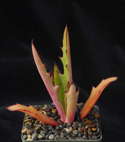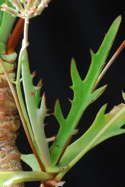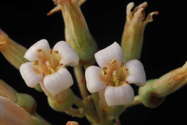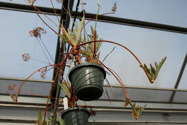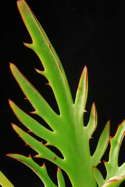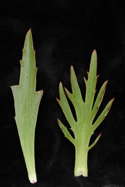It is curious that this species is named for a somewhat obscure feature of its not particularly conspicuous flowers and one that is shared with a number of other species in the genus; its sepals are fused into a tube. A more apt name would be K. stolonifera as the plants propagate by means of stolons that arch down under the weight of a plantlet that develops at the tip and takes root when it touches the ground. By this means the species forms colonies. In cultivation this tendency recommends this plant for hanging baskets where the stolons can cascade forming multitiered, aerial colonies. The form offered here shares this characteristic habit but is distinguished by its foliage. It has pinnatifid leaves dissected into lance-linear divisions, sometimes pinnately toothed in addition. The leaves are green but blush reddish in bright light and have red margins. The flowers are the typical pale pink and are produced in cymes at the tips of peduncles similar to but slightly more slender and spreading than the vegetative stolons. The species is native to Madagascar, but this plant came to us from Uhlig’s nursery in Germany. Rooted plantlets of HBG 126029, $8.

Published in the Cactus and Succulent Journal, Vol. 88 (3), May-June, 2016
